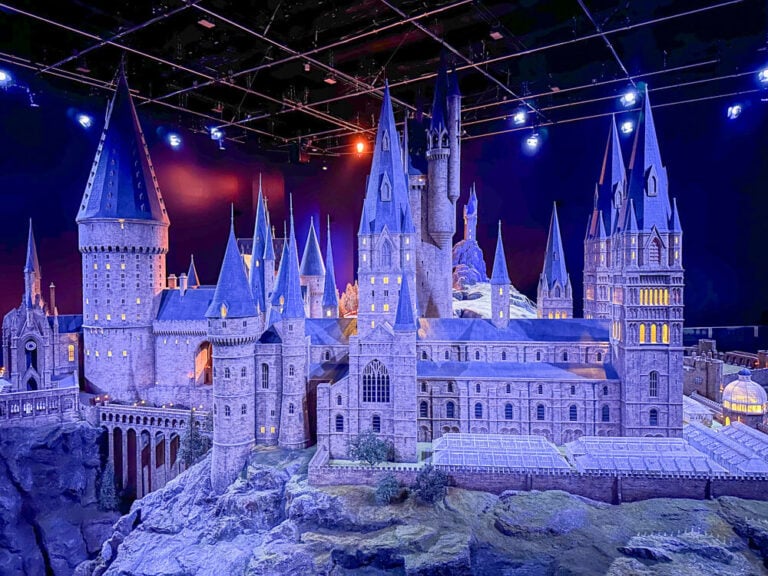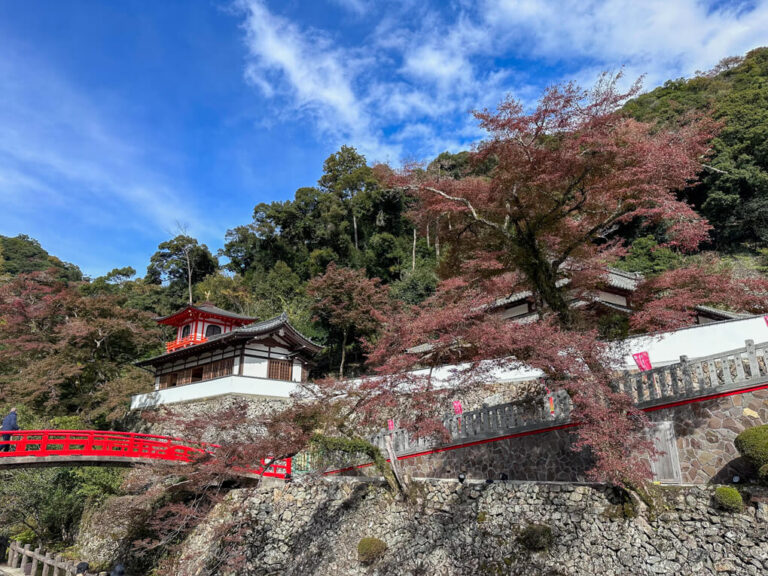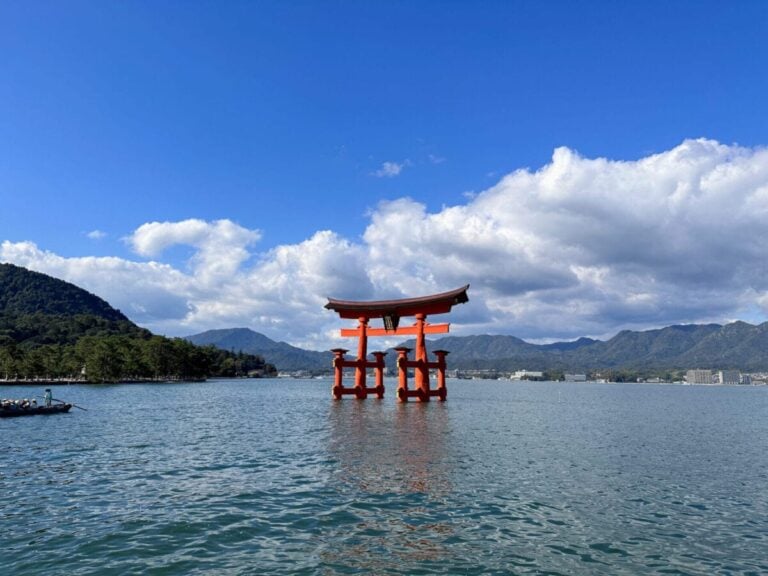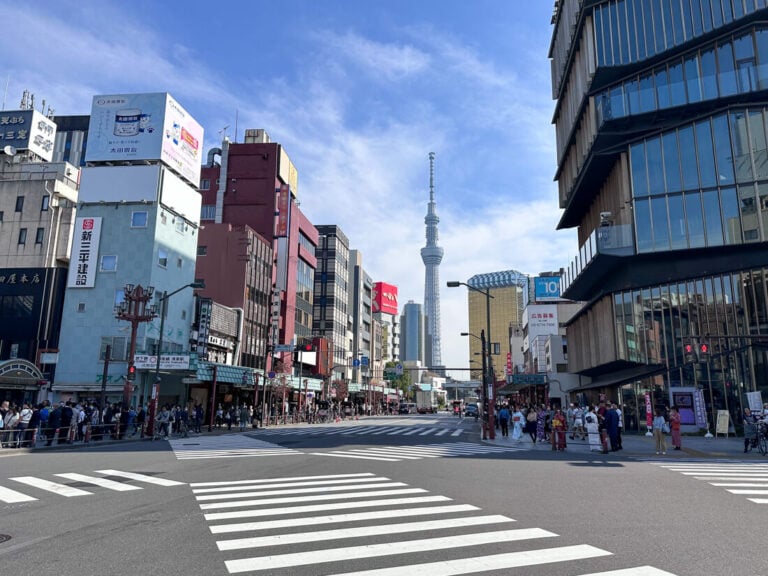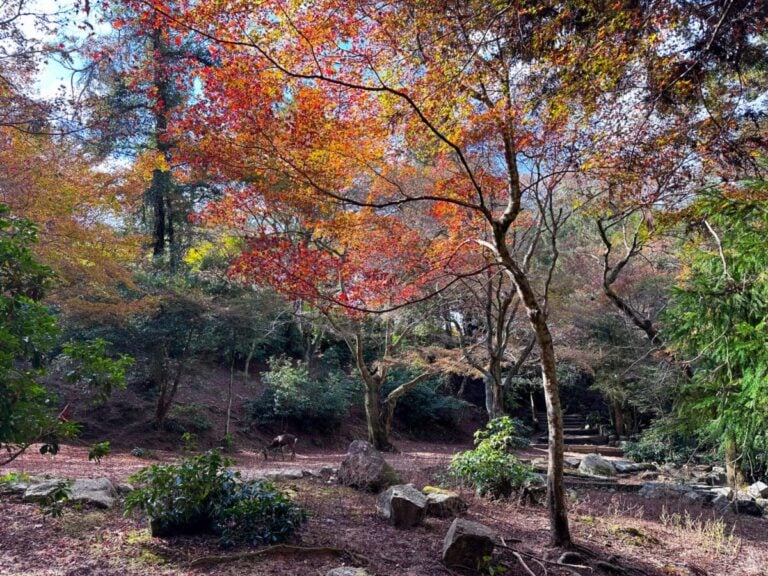6 Easy Day Trips from Osaka
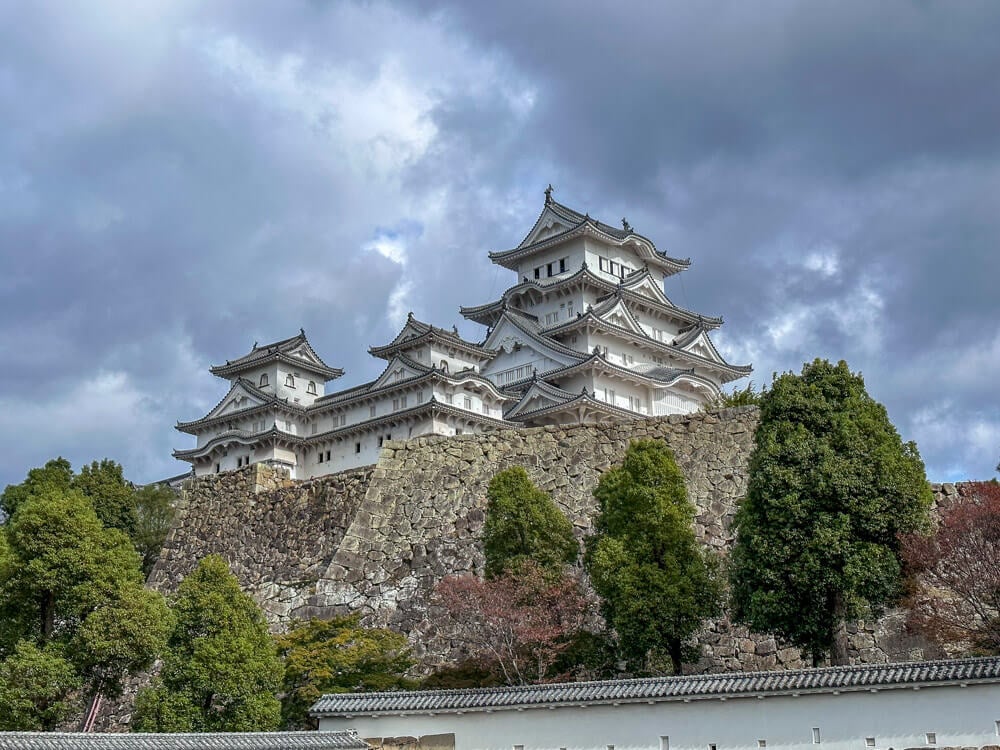
Osaka is easily one of my favourite cities in Japan. It’s vibrant and rich in culture, and it seamlessly blends modern delights with traditional Japanese culture. It’s a great spot to include in your Japan itinerary.
You can effortlessly spend a few days admiring Osaka’s sights and culinary delights, but its convenient location makes it the perfect base for exploring other areas of Japan.
Whether you want to discover the historical charm of Kyoto, meet the wild deer of Nara or see the famous Himeji Castle with your own eyes, Osaka is a gateway to many treasures of Japan.
In this post, I’ve shared six of the best day trips from Osaka.
Nara
An ideal day trip from Osaka is to the popular Nara. If you plan a trip to Japan, you’ll undoubtedly hear about Nara and its famous “wild deer”. It’s an absolute must-do activity in Japan.
The short 45-minute train ride from Osaka transports you to Nara, the ancient capital of Japan.
The free-roaming deer are certainly the main attraction of Nara. There are hundreds of them roaming around the park and trying to steal food from visitors. You can purchase deer food from vendors all over the city, and the deer will often bow before receiving the food.
In Shinto belief, deer are considered sacred messengers of the gods and are loved by locals and tourists alike.
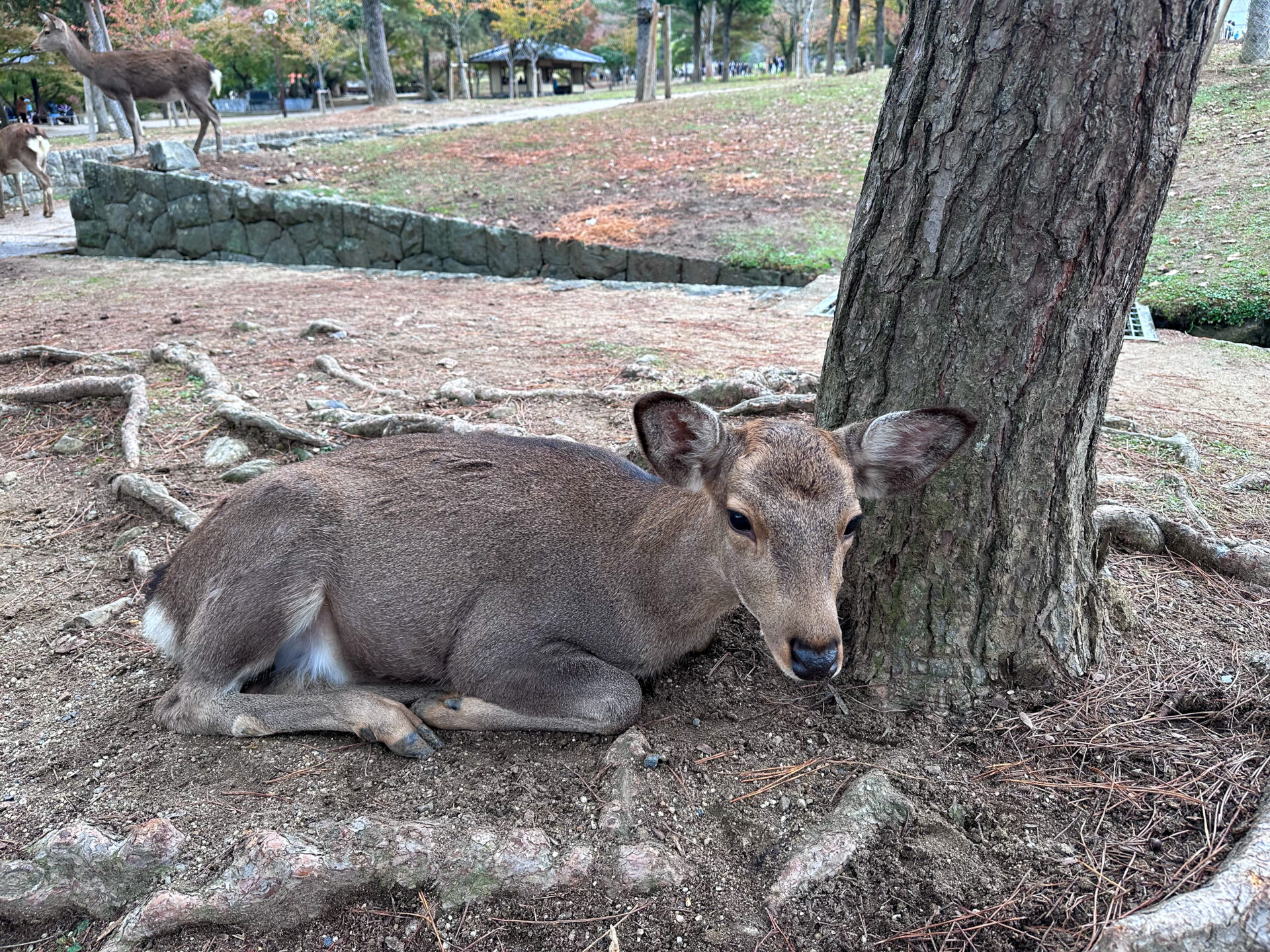
Nara is also home to one of Japan’s most historically significant Buddhist temples, the Todai-ji Temple. This world UNESCO World Heritage Site is in the centre of Nara Park and houses a Daibutsu, a giant Buddha.
With its mix of history, nature, culture and wildlife, Nara is a fantastic option for a day trip from Osaka.
How to get there: The JR Yamatoji Line and the Kintetsu Nara Line connect Osaka with Nara. If you have a JR pass, it covers the JR Yamatoji Line. Just be aware that the JR station is slightly further away from the park, and it’s 20/30 minute walk from there.
Looking for the best time of year to visit Japan. Consider a trip to Japan in November.
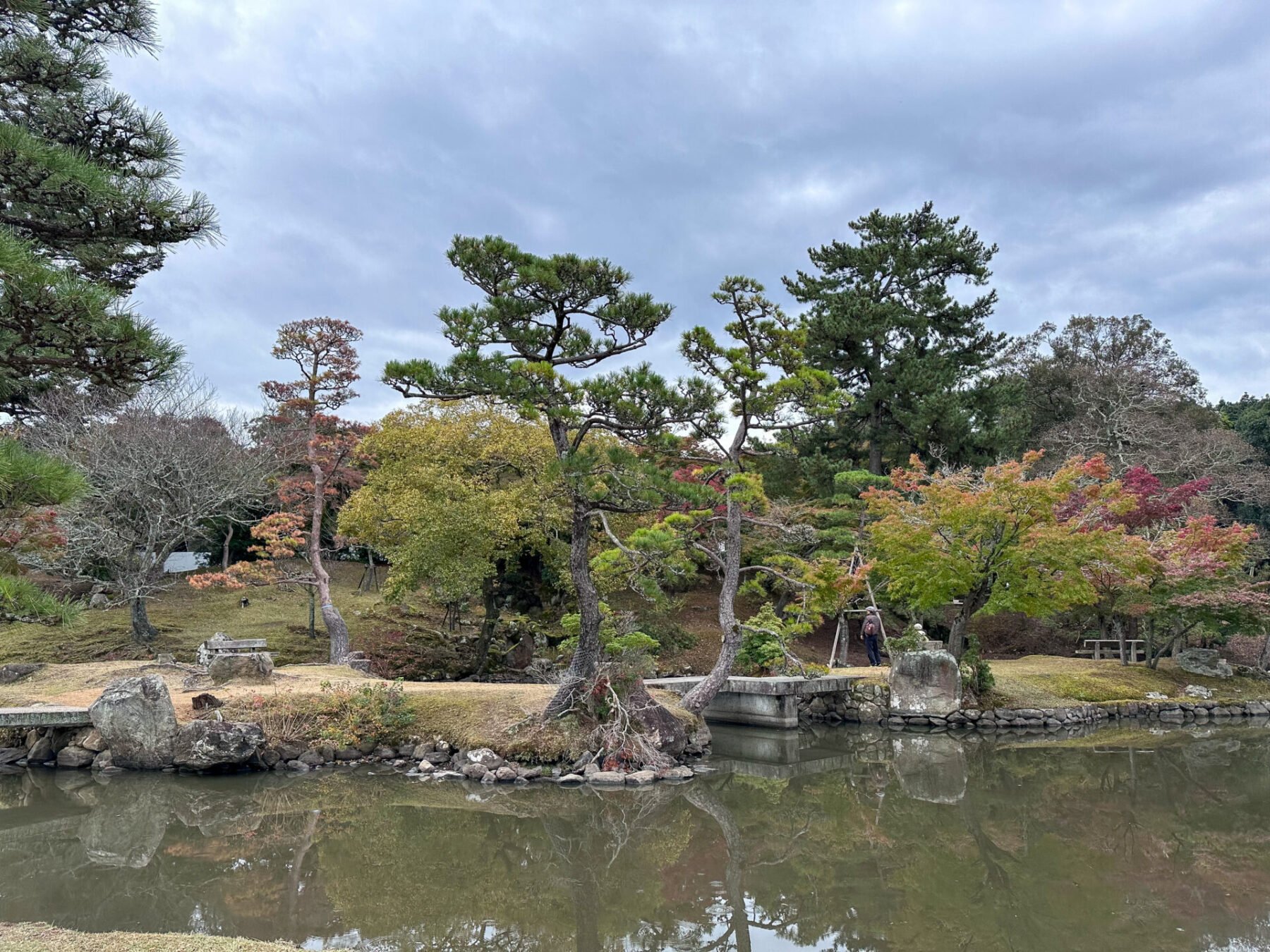
Himeji
Another exciting day trip from Osaka is to the city of Himeji. Here, you’ll find the famous Himeji Castle, a UNESCO World Heritage Site. In fact, Himeji Castle was one of the first UNESCO sites in Japan.
I visited Himeji on the third week of my trip, and I must admit, I was starting to suffer from a bit of “Castle fatigue”. Japan is full of incredible castles, but once you’ve seen a few… You get where I’m going with this. However, exploring Himeji Castle was one of the best things I did in Japan.
This national treasure was built in the 1300s and, with some renovations, is still standing today. Its white exterior, stunning surroundings, and beautiful Japanese architecture make it one of the most wonderful things to see in Japan.

The castle has 83 buildings, many of which are open to explore. You can spend hours wandering the castle grounds, learning about its history and exploring the splendid surrounding gardens. Don’t miss going inside the castle’s main building. It is six stories high and provides fascinating insight into the history of the building.
As of 2025, it costs just 1050 Yen to enter (£5/$7). The nearby Kokoen Garden is also well worth visiting.
How to get there: The best option to get to Himeji from Osaka is to take the JR Hikari train from Shin-Osaka. This takes about 40 minutes. Other JR trains stop there, but they can take a bit longer.
If you don’t have a JR pass, there is also a limited express train from Osaka-Umeda station.
When travelling in Japan, I recommend downloading the Japan Travel by Navitime app. The app will tell you how to get to wherever you want to go, the exact train line you need, and the cost.
Tip: If you’re also planning to visit Hiroshima, consider a stop at Himeji en route. I left my backpack in the station’s lockers and went off to explore the castle for a few hours.
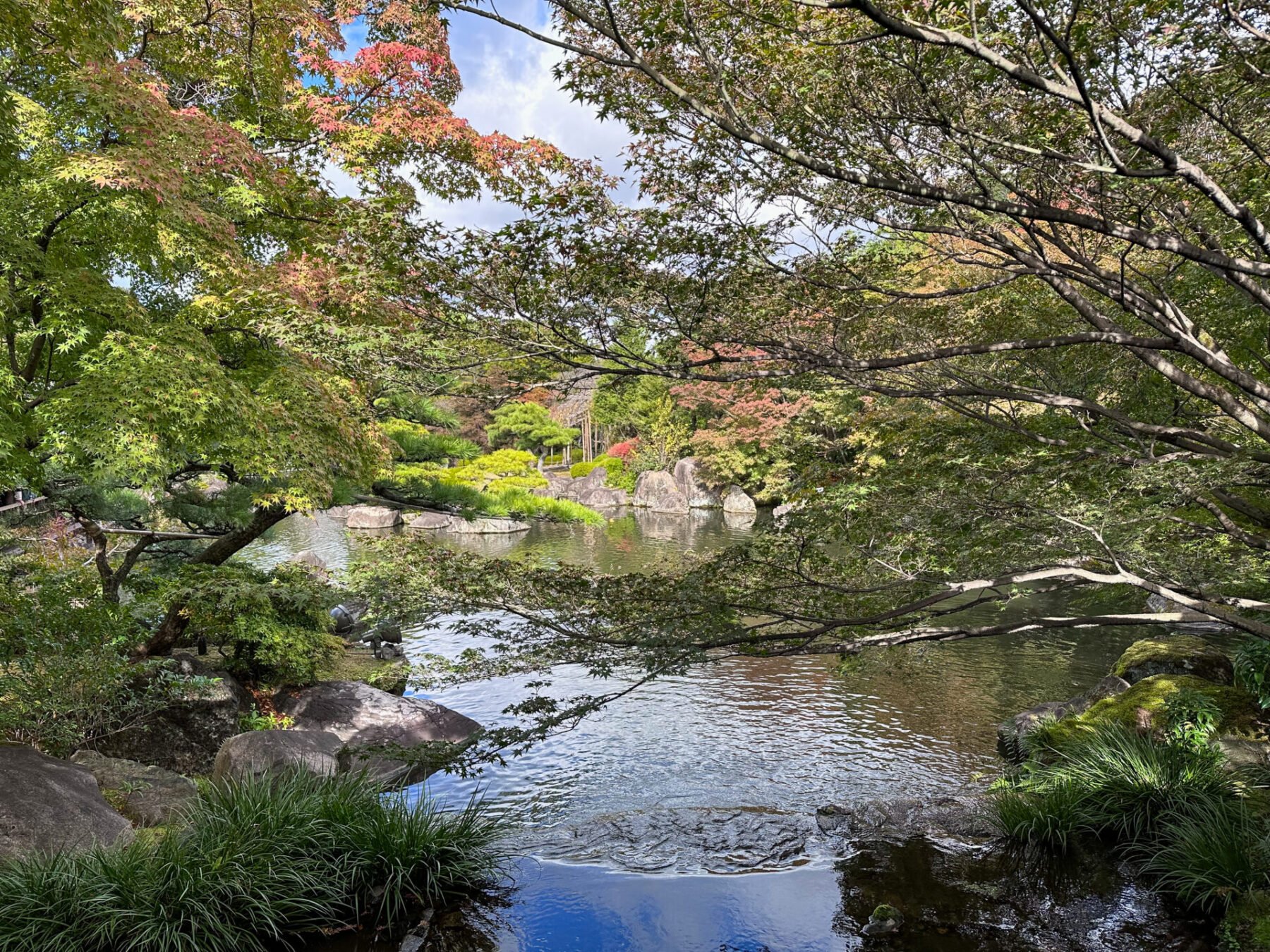
Hiroshima
Hiroshima is a popular day trip from Osaka, and a varied one at that.
Hiroshima was victim to a nuclear bomb attack in 1945 and was completely decimated. Despite its tragic past, Hiroshima is a place of hope, resilience and survival.
From the iconic Peace Memorial Park and Museum to the majestic Hiroshima Castle, the city provides an insightful look into an important part of Japan’s history. Hiroshima felt completely different from anywhere else I visited in Japan. It was almost like stepping back in time. It had a completely different vibe from other places on my itinerary.
A day trip to Hiroshima from Osaka is entirely possible, but I’d suggest spending at least one night there if you can.

Beyond the city itself is the beautiful Miyajima Island. The island is a quick journey from Hiroshima and is home to the famous Itsukushima Shrine, one of the most famous sights in Japan. You’d struggle to fit this in on a single day trip, so stay at least one night if you’re keen to explore the wider area.
How to get there: To get to Hiroshima from Osaka, you’ll need to ride the JR Sanyo Shinkansen line. If you don’t already have one, consider getting the Kansai Wide JR pass.

Kobe
Kobe has been put on the tourist map mainly for its famous beef, a highly prized type of wagyu beef. If you want to try this famed beef, a trip to Kobe from Osaka could be the answer.
While Kobe is known for its beef, the city has much more to offer. From its famous entertainment district to its beautiful mountains, there are plenty of wonderful things to see in Kobe.
On a day trip to Kobe, plan to spend some time at Mount Rokko, Kobe’s tallest mountain. The area is connected by a scenic ropeway with breathtaking views. Before visiting Kobe’s vibrant waterfront, make a quick stop at Nunobiki Falls, known as one of Japan’s most important waterfalls.
How to get there: Kobe isn’t too far from Osaka, and the Shinkansen can get you there in as little as 15 minutes. If you don’t have a JR pass, consider getting the JR Kobe Line from Osaka station as this is much cheaper. Alternatively, jump on the Hankyu Kobe Main Line from Osaka-Umeda.
Minoo Park
Minoo Park sits just outside of Osaka and is the perfect place to escape the crowds and see a different side to Japan. Known for its maple trees, autumn colours and towering waterfalls, Minoo Park is the opposite to the busy city of Osaka.
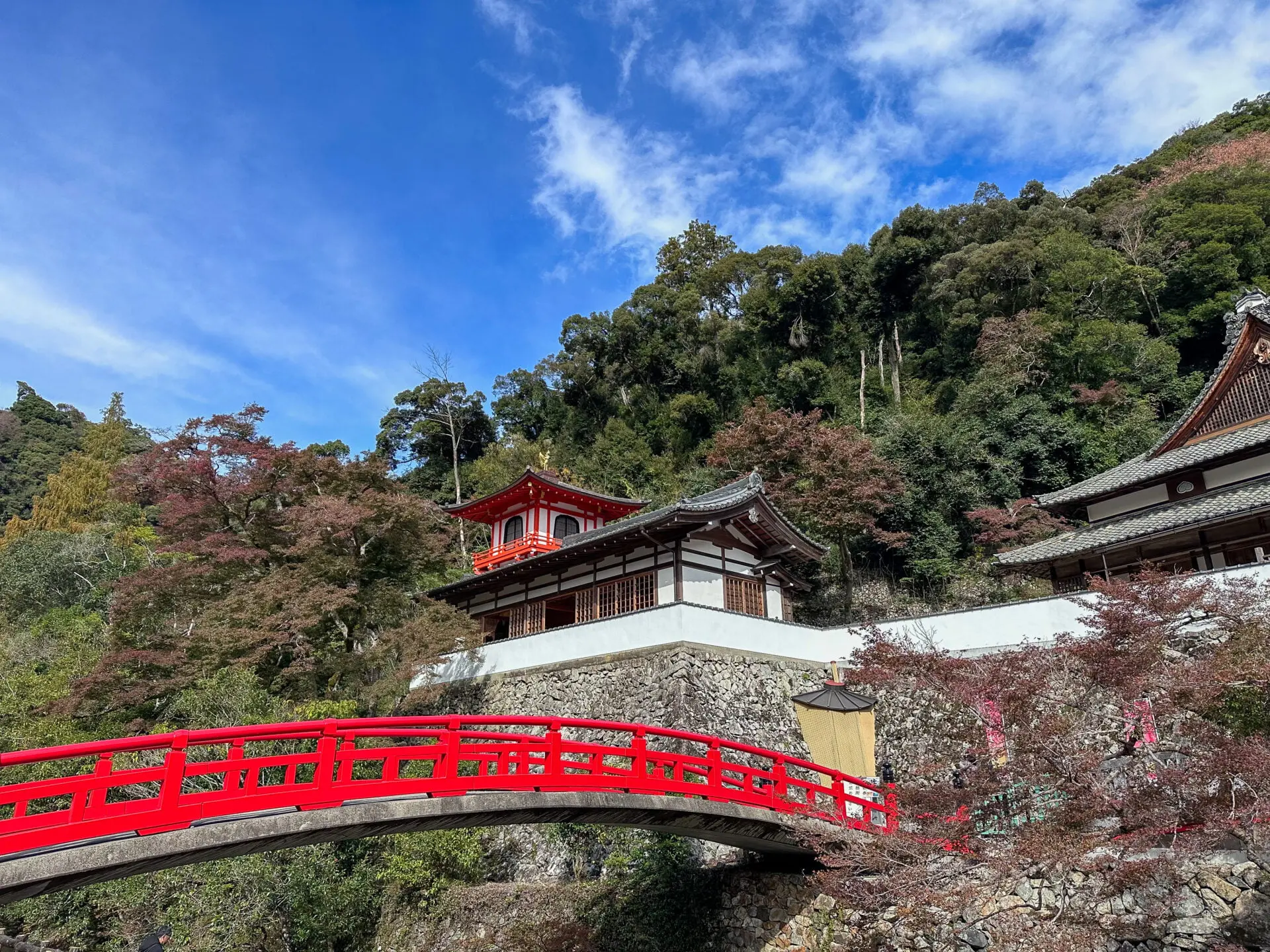
Minoo Park wasn’t originally on my itinerary, but after a few days in Osaka I was craving a break from the crowds. I visited Minoo Park with little planning, and it ended up being a real highlight of my trip to Japan.
The park itself is beautiful. The main path from the station to the famous Minoo Waterfalls follows the river and takes you past several temples. There are also lots of trails going off from the main path if you want to explore a bit more. One of the best things I did in Minoo Park was hike up to the observation platform. It boasts incredible views of the park and Osaka in the distance.
Minoo Park is also famous for its giant waterfall, Minoo Falls. No trip to the park would be complete without visiting the waterfall. From the station, it’s a 3km walk each way. Allow plenty of time to make stops along the way at the famous temples. I’d suggest planning to spend 3 to 4 hours in the park.
How to get there: To get to Minoo Park from Osaka, take the Hankyu Takarazuka Line from Osaka-Umeda station. Once you get to Ishibashi Handai-mae, swap to the Hankyu Mino Line. From Osaka, the journey takes about 30 minutes. This isn’t included in the JR Pass.
If you’re keen to visit, here are all the things to do in Minoo Park.

Kyoto
If Kyoto isn’t already on your Japan itinerary, consider visiting Kyoto as a day trip from Osaka.
Kyoto is steeped in history and Japanese culture. While Osaka is modern and vibrant, Kyoto offers a different side to Japan. It’s perfect for those seeking to immerse themselves in the ancient beauty of Japan. I have never visited anywhere quite like Kyoto and it really is a must visit on any trip to Japan.
One day isn’t enough time to see everything, but it’s enough to get a taste for this historic city.
If you only have one day in Kyoto, make sure you plan what you want to see in advance. There are lots of things to do in Kyoto, but here are some of the best options if you only have one day.
Fushimi Inari shrine
Walking through the Torii Gates at the Fushimi Inari shrine is one of the most popular things to do in Kyoto and for good reason. There are thousands of orange Torii gates which lead you up to the top of a hill. The crowds here can be extreme, so you want to go as early in the day as possible. You’ll likely also find that the further up the hill you walk, the quieter it gets. Depending on how far you want to walk, plan to spend two hours here.
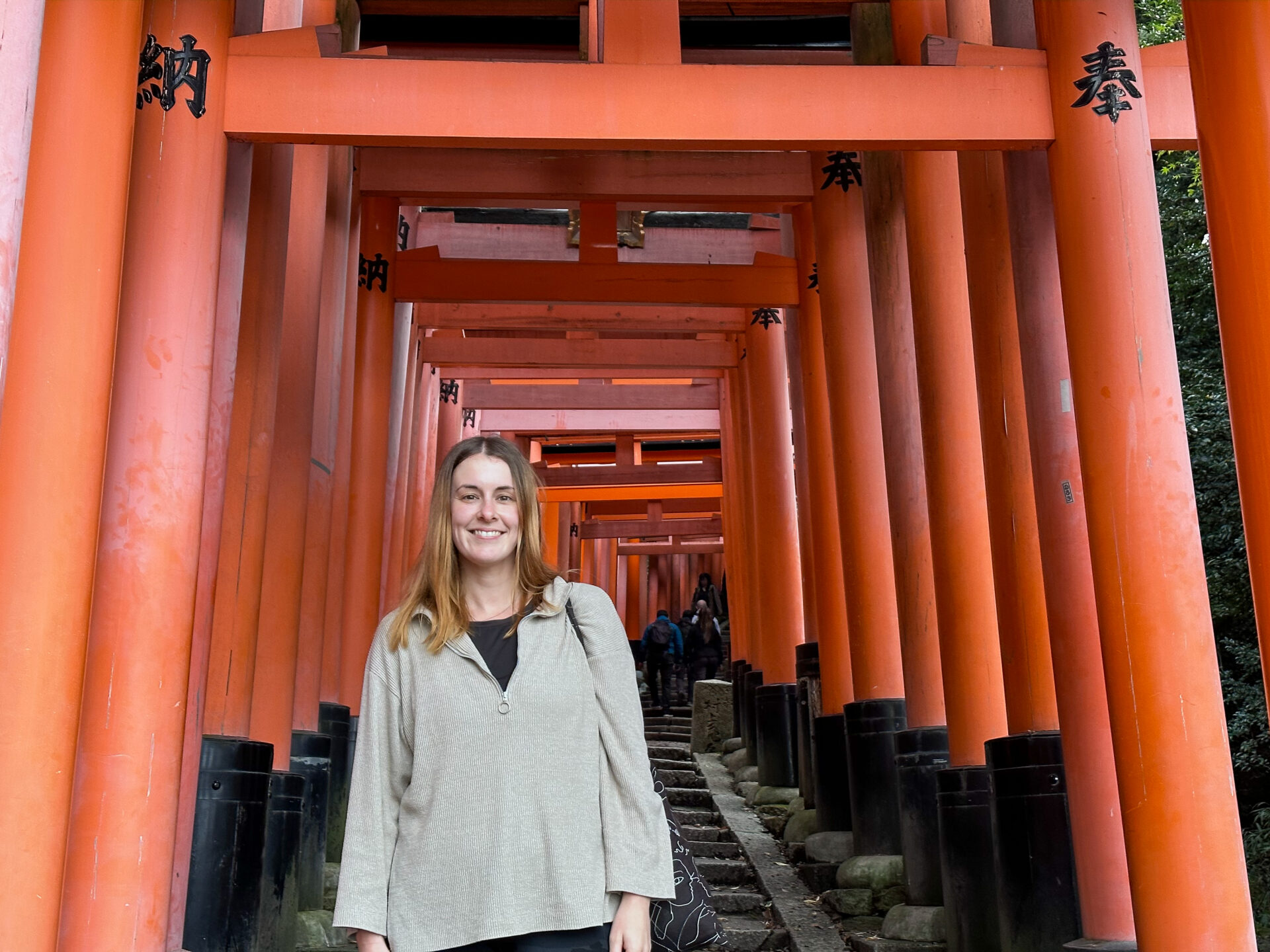
Southern Higashiyama
The Southern Higashiyama area of Kyoto offers a real insight into the history and cultural richness of Japan. Strolling through its narrow streets feels like stepping back in time. This charming area is renowned for its temples, boutiques and wooden tea houses.
One of the main attractions in Southern Higashiyama is the Kiyomizu-dera Temple, a Buddhist Temple and UNESCO World Heritage Site. It was one of the most impressive temples I visited in all of Japan. I will warn you though, the crowds there can be very overwhelming, so go as early in the day as possible.
No visit to Southern Higashiyama would be complete without stopping at the Yasaka Pagoda. I had seen this photo in almost every Japan itinerary I had ever read.
Gion, the famous Geisha district, is also in Southern Higashiyama. If you’re lucky, you may see a Geisha.
You can spend an entire day wandering around Southern Higashiyama, but plan to spend at least 2 or 3 hours there.
Note: as of April 2024, tourists are banned from certain areas of the Geisha district. This will mainly include alleyways and traditional teahouses and restaurants. They will now only be accessible to Geishas and local residents.
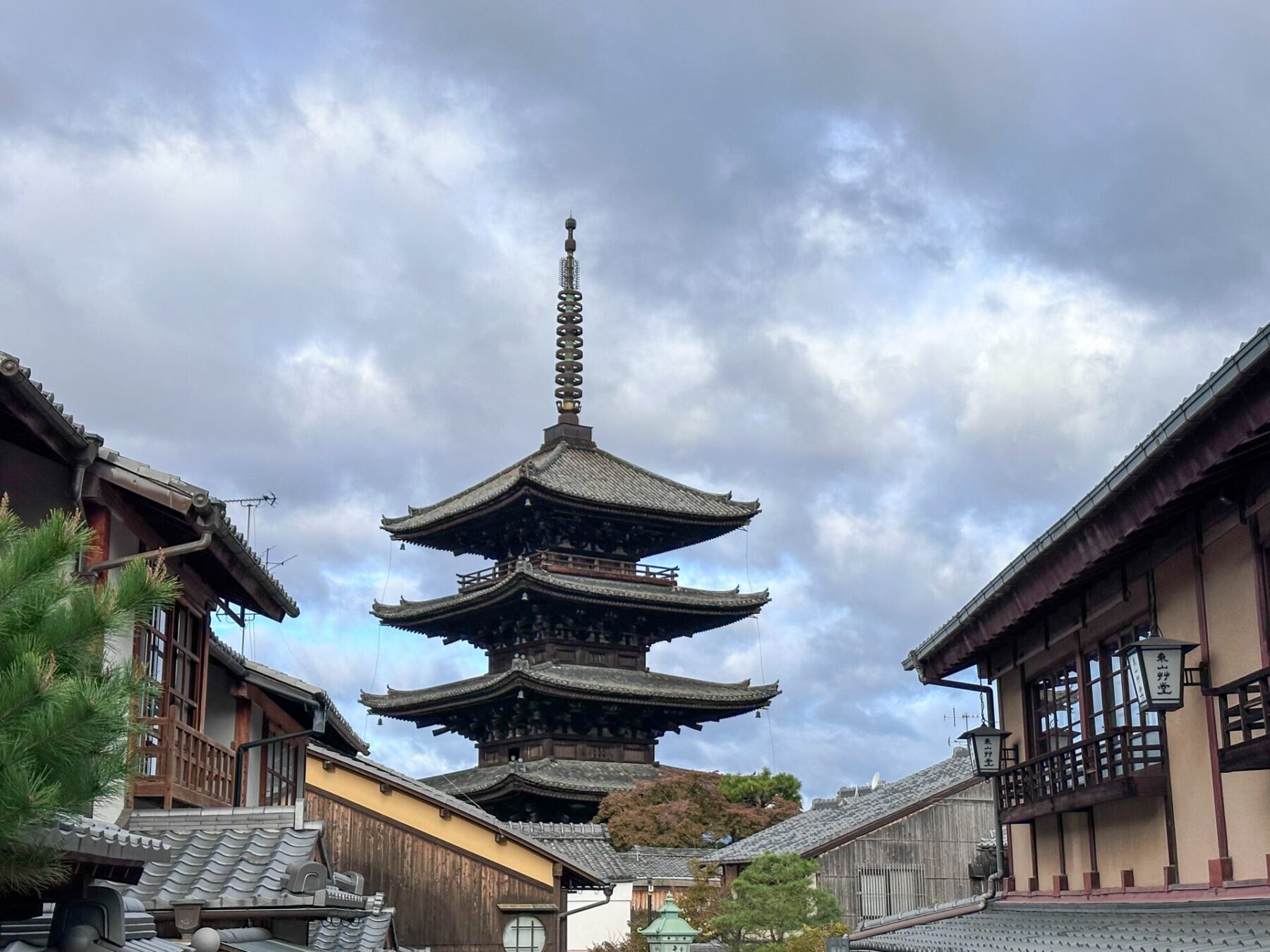
Kinkaku-ji Temple
Another popular temple in Kyoto is the Kinkaku-ji Temple, which is famous for its Golden Pavilion. Covered in shimmering golden leaf, this Zen Buddhist temple is set in beautiful, landscaped gardens. If you’re lucky with the weather, the temple is reflected by the surrounding water, creating a beautiful photo.
Nishiki Market
Japan is famous for its street food and Kyoto is no exception. Kyoto has several markets which are well worth exploring.
The Nishiki Market is in the heart of Kyoto and is a haven for foodies. Nicknamed “Kyoto’s Kitchen”, this market stretches for five blocks and offers a real mixture of food. The market covers every palette, but if you’re a fish lover, you really must visit. Here are some of the best foods to try at Nishiki Market.
How to get there: Kyoto isn’t far from Osaka and you can be there in as little as 15 minutes. The Shinkansen to Shin-Osaka station is the fastest way to get between the two cities, but this can be expensive without a JR pass. There are also local and rapid lines operating between the two cities. I would suggest downloading the Japan Travel app to help you navigate between the two cities.

How to get around the Osaka area?
Japan has one of the world’s best train networks and is relatively easy to get around. When planning your trip to Japan, you’ll no doubt be questioning if you need a Japan Rail Pass.
I’m not going to get into the ins and outs of it here as it’s a very complicated topic, but ultimately a JR pass gives you unlimited use on the JR train network (depending on the type of pass you have).
If you’re interested in any of the above day trips from Osaka, I’d recommend looking at the JR Kansai Wide Hiroshima pass. This pass covers most JR trains between Osaka, Kyoto and Hiroshima including Kobe and Himeji. (Note: It doesn’t cover the Shinkansen between Kyoto and Osaka, but there’s a local train which is included.)
I bought the five-day pass from Klook for my time between Kyoto, Himeji, Nara, Hiroshima and Osaka and it saved me a lot of money. If you’re not planning to get a JR pass for your entire trip, look into this pass and see if it would save you any money.
The Japan Travel App by Navitime is also an incredibly helpful app to help you navigate the area.
Did you like this post about easy day trips from Osaka? Share or save for later.

